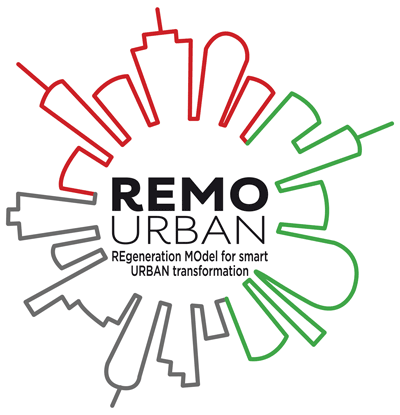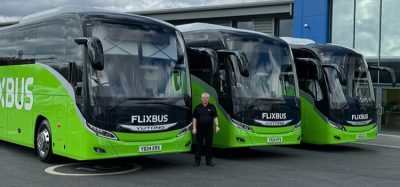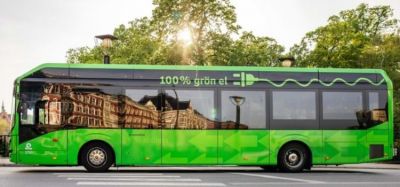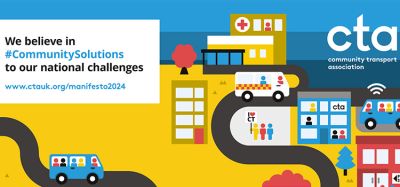REMOURBAN project – Delivering sustainable mobility
- Like
- Digg
- Del
- Tumblr
- VKontakte
- Buffer
- Love This
- Odnoklassniki
- Meneame
- Blogger
- Amazon
- Yahoo Mail
- Gmail
- AOL
- Newsvine
- HackerNews
- Evernote
- MySpace
- Mail.ru
- Viadeo
- Line
- Comments
- Yummly
- SMS
- Viber
- Telegram
- Subscribe
- Skype
- Facebook Messenger
- Kakao
- LiveJournal
- Yammer
- Edgar
- Fintel
- Mix
- Instapaper
- Copy Link
Posted: 2 November 2015 | Maria Angeles Gallego, Javier Olmos, Clemente Cárdenas Cuevas, Cristina de Torre and Miguel Ángel García Fuentes, all from CARTIF Technology Centre
The REMOURBAN project focuses on the welfare of citizens within the sustainability framework of a smart city and aims to develop and validate a number of innovative technologies plus organisational and economic solutions to meet the needs of the energy, mobility and ICT sectors. For Intelligent Transport, REMOURBAN colleagues Maria Angeles Gallego, Javier Olmos, Clemente Cárdenas Cuevas, Cristina de Torre and Miguel Ángel García Fuentes, all from CARTIF Technology Centre, give further details about the project and what can be expected…


The main objective of REMOURBAN is to establish the development of a sustainable urban regeneration model that will be validated in three lighthouse cities: Valladolid (Spain), Nottingham (UK) and Tepebas5 ı (Turkey).
REMOURBAN will pave the way for the transformation of European cities into smarter places, therefore, replicability is a key aspect. Once it has been validated within the lighthouse cities, two ‘follower’ cities – Seraing (Belgium) and Miskolc (Hungary) – will implement the REMOURBAN sustainable urban regeneration model.
The REMOURBAN model will be designed to offer holistic integrated approaches in the energy and mobility sectors, plus potentially the ICT sector, in which all aspects of sustainability are taken into account.
Urban mobility is paramount to address the sustainable regeneration of cities due to the number of issues that derive from a non-sustainable and non-efficient urban transport strategy. Urban transport represents almost a quarter of all the EU transport CO2 emissions. Conventional fuel vehicles contribute 40% of city pollution, contributing to both environmental damage and severe illnesses. Moreover, the growing population in our cities demands improved mobility strategies that counteract traffic congestion and parking problems, etc., and contribute to reduce the average journey delay and door-to-door journey time.
Some of the innovative technologies that will be validated within the REMOURBAN project include the introduction of clean fuel vehicles, in particular electric vehicles. Organisational strategies and promotion plans will complete the whole urban mobility strategy to be deployed in the three lighthouse cities, and later implemented in the follower cities.
The mobility strategy in Valladolid
Valladolid is a medium-sized city with 309,714 inhabitants within an extension of 197.91km22. Registered vehicles in the city at the end of 2012 included 136,055 cars, 13,137 motorbikes, 18,058 trucks and vans, 433 buses, 1,119 industrial tractors and 3,958 ‘other’ vehicles. The number of sustainable vehicles in the city of Valladolid, especially pure electric vehicles (PEV) is scarce. The current ‘Strategy to Promote Electric Mobility in the city of Valladolid’, will support the REMOURBAN project and help turn the city into a reference point for electric mobility.
Mobility starting point
The largest share of public city transport is covered by bus which is managed by AUVASA (public transport operator). This fleet consists of 103 PLG fuelled buses, 46 biodiesel buses and one hybrid (non plug-in) bus. AUVASA buses have high capacity (33 articulated vehicles with room for more than 140 passengers) and they are all equipped with air conditioning. For accessibility, 150 vehicles have low-platforms to and 86 vehicles have access ramps. There are currently 48 bus lines in operation, with more than 500 stops – 20% of which offer passenger information thanks to a GPS system. Passenger and journey information is also available via a smartphone app. Payment is managed through contactless RFID cards and users can also get information regarding nearby stops.
There are currently 466 taxis operating in the city – the latest 20 joined the current fleet in 2008. Among them, there are several hybrids (non plug-in) and others are PLG fuelled. There’s also one FEV which has been in operation since December 2011.
So far, ‘last-mile’ freight and logistics deliveries have been performed by means of ICE vehicles, and since May 2013, a new bicycle public sharing system known as ‘Vallabici’ has been available for Valladolid citizens offering 260 bicycles and 30 parking stations.
Mobility actions to be deployed
The city of Valladolid will deploy an electric fleet comprised of two buses, 20 taxis, five ‘last-mile’ delivery vehicles, two private City Hall vehicles and will actively promote electricity for privately owned vehicles. There’s already some charging infrastructure in place (34 slow charging points) and plans to upgrade them and build new ones have been set up as part of the REMOURBAN project.
The challenge is to monitor, identify and analyse the best strategies to introduce this clean technology within an urban environment alongside the city’s transport plans and policies and complying with the needs of citizens.
On-board units will be installed and configured to register and transmit to a local ICT platform (and further on to a higher level ICT platform) all the necessary information to assess a number of identified KPIs (battery status, alarms, energy flows, emissions, speed, etc.).
The mobility strategy in Nottingham
Nottingham, one of the major cities in the East Midlands of the UK, is situated 209km north of London and has an official population of 305,750 which is relatively small due to its historically tightly drawn official city boundary. The wider city urban area has a population of 729,977 making it the ninth largest urban area in the UK. Nottingham leads the way in sustainable transport; it is the first city in the UK to have a stringent environmental standard for all buses entering the City Centre.
Mobility starting point
Bus travel accounts for around 34% of all trips made, far higher than other comparable cities in the UK. Nottingham City Council has introduced a Workplace Parking Levy (WPL) to tackle problems associated with traffic congestion, by both providing funding for local transport and by acting as an incentive for employers to manage and potentially reduce their workplace parking. Money raised from the WPL will go towards funding NET Phase Two (the extension to the existing tram system), the redevelopment of Nottingham Railway Station (known as the Hub Project) and will also support the popular Link bus network.
Nottingham’s existing tram network carries 10 million passengers per year, taking some three million car journeys off congested roads annually. Phase 1 is 14km-long with 23 tram stops. NET Phase 2 will be a 17km-long extension with 28 new tram stops.
Mobility actions to be deployed
Nottingham City Council is developing a fleet of 50 electric buses over 2014 to serve existing Link services and the two park and ride bus services. Electric buses are zero CO2, NOx and PM with 50% less well-to-wheel CO2 than diesel counterparts.
The project will establish a tourist link bus service using two electric vehicles on a proposed circular route. The electricity to recharge the buses can be supplied by Enviroenergy, powered by burning the city’s waste.
Currently, Nottingham has eight fast chargers that are all based in bus depots around the city. In order to increase the fast charging infrastructure in the city and demo site, 12 fast chargers available as ‘on-street’ chargers will be installed within the REMOURBAN project, making a significant difference to the time the buses can spend out of the depots.
The project will also develop a small local consolidation centre for ‘last-mile’ delivery by using small electric vehicles for the transportation of goods within the city centre, therefore reducing the number of large vehicles used for domestic and business deliveries. The solution is scalable, cost-effective, makes more effective use of existing infrastructure, plus is of particular benefit to cities and towns.
The project incorporates the City Car Club Nottingham – an hourly car hire scheme funded through the Local Sustainable Transport Fund (LSTF) and the WPL. The scheme is an alternative to car ownership and traditional car hire and provides greener transport options for local residents by using hybrid or electrical vehicles.
The mobility strategy in Tepebaşı
The Turkish district of Tepebaşı lies to the north of Porsuk River which flows through the centre of Eskişehir. The municipality is home to 39.34% of the total population of Eskişehir. The City of Eskişehir lies to the south of the capital Ankara in the north-west of Turkey, a commercial intersection since antiquity and one of the first modern cities of the Turkish Republic through industrialisation. Today, Eskişehir, with a population of around 800,000, is a modern urban region – the second biggest in Middle-Anatolia after Ankara.
Mobility starting point
Eskişehir, due to its geography and historical development in conjunction to the railroad industry, has a proportionally high presence of non-motorised transport in urban mobility. The Metropolitan Municipality has announced in its Sustainable Mobility Master Plans, an urban region based on pedestrianised, bicycle-friendly modes of transportation.
At present three tram lines with 33 trams serve the city (ESTRAM). A total of 198 buses, of which 32 belong to the Metropolitan Municipality, operate together with 379 minibuses and 467 taxis. There are also passenger boats (ESBOT) operating on Porsuk River, but these are presently only for touristic purposes, though integration into the city public transport is being planned.
Mobility actions to be deployed
Two interventions have been devised to facilitate the expansion of bicycle utilisation in the city and its integration – not just physically but also administratively/economically – to city mass transport policies, and to demonstrate plug-in-electric vehicles (minibuses and bicycles) use and charging infrastructure for future deployment.
Additionally, 6.2km expansion of cycling lanes will be established during the project; the lanes will be integrated into the urban transportation network via nodes and bike parks at the city’s rail stations. A fleet of 50 smart-bikes will be rented out by Tepebaşı with the necessary charging infrastructures at appropriate locations.
Tepebaşı Municipality will purchase four e-buses operating to/from demo sites and environs as well as 17 hybrid cars that will use the charging infrastructure.
Furthermore, five parking stations and two EV charging stations will be located in the town centre and the demo site.
Expectations
The main outcome from REMOURBAN will be a model whose application will ensure the efficiency and sustainability of urban transport, conveying a better quality of life for citizens. The replicability potential of this model will guarantee transference of knowledge and be of benefit to other European cities.
Regarding the expected impact to be achieved in relation to mobility, more specifically:
- REMOURBAN will increase mobility efficiency, thus allowing a reduction of the average journey delay and the door-to-door journey time
- REMOURBAN will foster the mass market for clean vehicles in Europe; this means lower emissions of pollutants and a 5% reduction of CO2
- REMOURBAN will impact on the citizens, increasing their awareness and participation in city life.
Reference
- remourban.eu
- Source: Instituto Nacional de Estadística (I.N.E.). January 2013.
Acknowledgement
The activities described in this paper are partly funded by the EU Grant Agreement No 646511.
Biography
Maria Angeles Gallego holds a MEng degree in Industrial Engineering from Valladolid University. She joined CARTIF in 2000 where she has been working as a Researcher and Project Manager. Her knowledge background is strongly related to predictive maintenance techniques and electro-mobility. She’s been involved in several transport related projects and is currently participating in REMOURBAN in charge of mobility issues for Valladolid city. She has also been involved with other European funded projects including ‘Green eMotion’ where she performed an analysis of charging patterns and infrastructure planning for electric vehicles, plus ‘Automotive Chassis Development for 5-Days Car AC-DC’ which she developed collaborative forecasting and supply management techniques.
Javier Olmos received his PhD from the University of Valladolid and obtained his MEng in Industrial Engineering in 1998. He has been working in CARTIF for 17 years and has participated in numerous national and international projects in the areas of discrete events fault diagnosis, supervision, advanced traceability management systems, infrastructures and electric vehicles. He has led and participated in more than 15 national and international programmes and has experience of large EU projects like ‘Green eMotion’. He is currently working in REMOURBAN in the tasks related to electric vehicles and mobility. He belongs to the AEDIVE Board of Directors and participates in the AENOR AEN/CTN 178 ‘Smart Cities’ Committee dedicated to smart charging points.
Clemente Cárdenas Cuevas received a degree in Industrial Engineering in 1996 and a Ph.D. in Systems and Process Engineering in 2006, both from the University of Valladolid. In 2008 he took a degree in Business Administration and Management from the Spanish Open University. He has been working as a Researcher in the Automation and Process Control Division of the CARTIF Technology Centre since 1996 where he has conducted several regional, national and European R&D projects related to control systems, predictive maintenance and automation processes. Most recently, he has been working in the area of urban mobility in several European funded projects including REMOURBAN and ‘Green eMotion’.
Cristina de Torre received the Industrial Engineer’s Degree in 2006 and the MSc. Eng. in Energy Engineering programme in 2010, both from the University of Valladolid. Since 2008, she has been working as a Researcher and Project Manager in the Energy Division of the CARTIF Technology Centre. She has also been involved in many national and European projects linked mainly on integration of renewable energies in buildings, energy performance simulations, buildings energy refurbishment, energy audits, monitoring and control of solar thermal heating and cooling installations and low energy buildings. She has contributed to different national and international congresses related to renewable energies and energy efficiency. Currently she works as Deputy Project Coordinator of REMOURBAN.
Miguel Ángel García Fuentes gained Architect (2010) and MSc Arch. (2012), both from the University of Valladolid. Since 2012 he has worked as Project Coordinator and Researcher in the Energy Division of the CARTIF Technology Centre, in European RTD Projects in the framework of Smart Cities and Nearly Zero Energy Cities, focusing on energy performance improvement in new buildings and building/district renovation, Building Energy Performance Simulation (BEPS) tools and Building Information Modelling (BIM), addressing the gap of data interoperability. He participated in the coordination teams of the EU-FP7 funded BaaS and R2CITIES projects. Currently he works as Project Coordinator of REMOURBAN and OptEEmAL EU-H2020 funded projects. He is also developing his doctoral thesis about ‘Energy performance improvement in existing buildings and districts towards Nearly Zero Energy Cities’. He has contributed to different national and international congresses and has participated as Invited Professor in the Master in Research Architecture, at the University of Valladolid, and in a Seminar at the Energy Institute of the Istanbul Technical University.
Related topics
Fleet Management & Maintenance, Sustainable Urban Transport
Issue
Issue 5 2015
Related cities
Spain, Turkey, United Kingdom
Related organisations
CARTIF Technology Centre








